Voltages and temperatures
Let's first look at the voltage curve in the gaming loop. both cards act almost identically and the voltage levels under load after heating to values between 0.96 and 0.98 volts. However, if you take a closer look, the regulation of the passively cooled card is a little finer and faster. However, the averages (and also the beat, as well as the gaming performance) are practically identical.
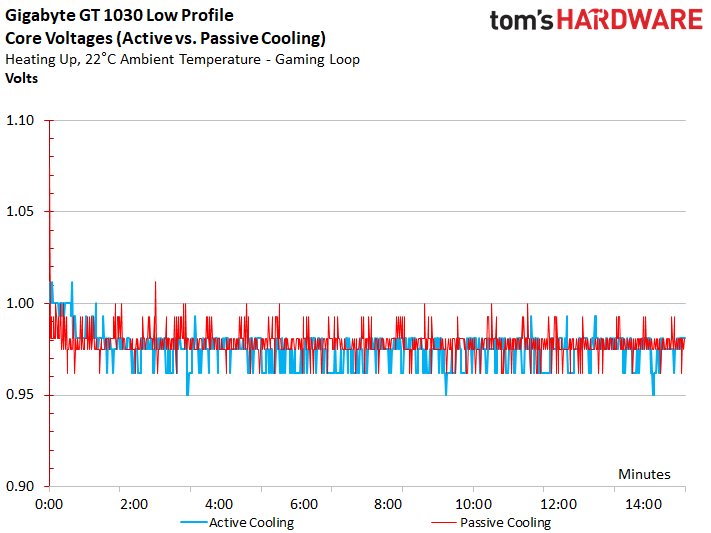
The power consumption of both cards is also basically the same. The fact that the small fan absorbs less than one watt of electrical power in normal operation, the differences due to the possible, different GPU quality are already in the same frame or even greater. The measured 32 watts when gaming or gaming 34 watts in the Torture test are a little above Nvidia's TDP data, but this refers to the GPU alone. This makes the story look good again and you're just below the 30-watt mark.
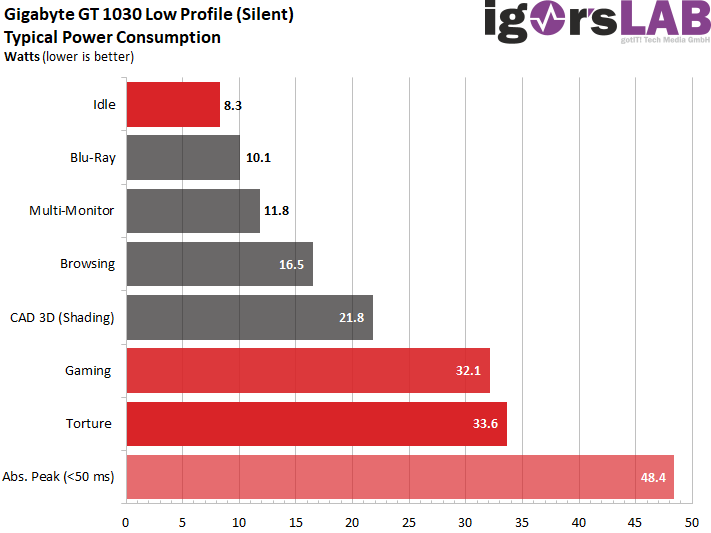
Power consumption and currents at a glance
Now let's look at the exact curve in the gaming loop. Short-term peaks up to almost 40 watts (in higher resolution and very short intervals also occasionally up to approx. 48 watts) can be neglected, because after every outcry there is compensating silence. In any case, the average value meets the manufacturer's specifications quite accurately.
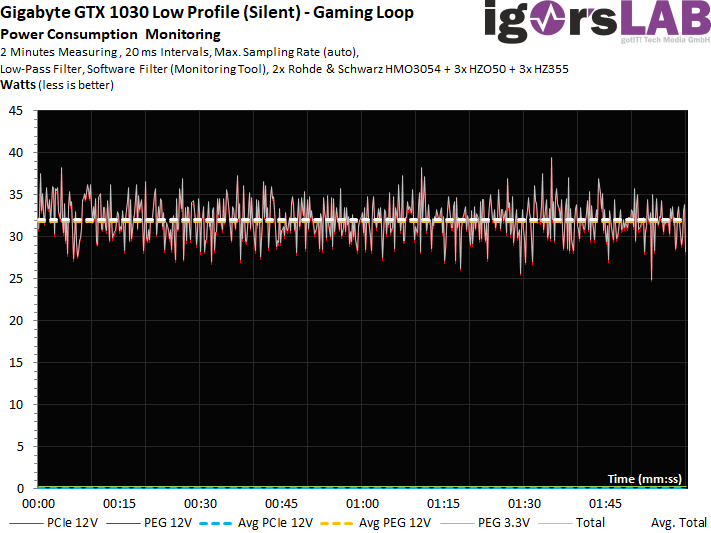
Short-term current peaks up to approx. 3.3 Amperes are also not something that could grill the technique in any form.
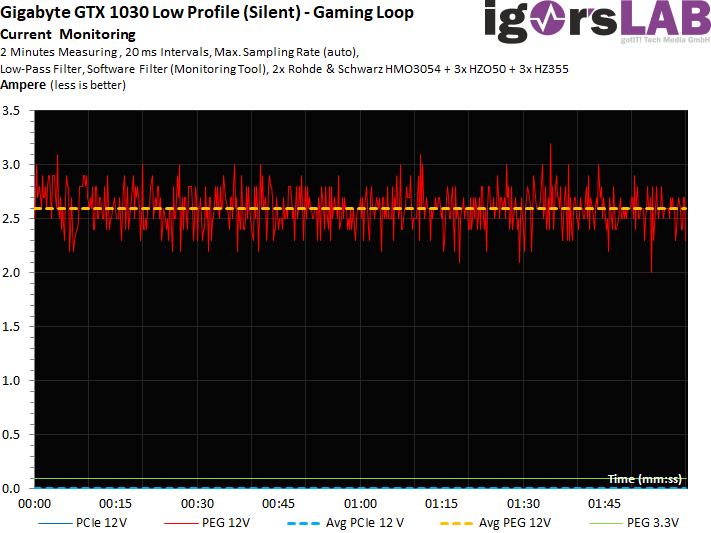
In the Torture-Loop, the deflections of the curves are somewhat more moderate, but here too there were peaks up to approx. 39 watts. However, the course is somewhat more balanced, because the load is also more constant.
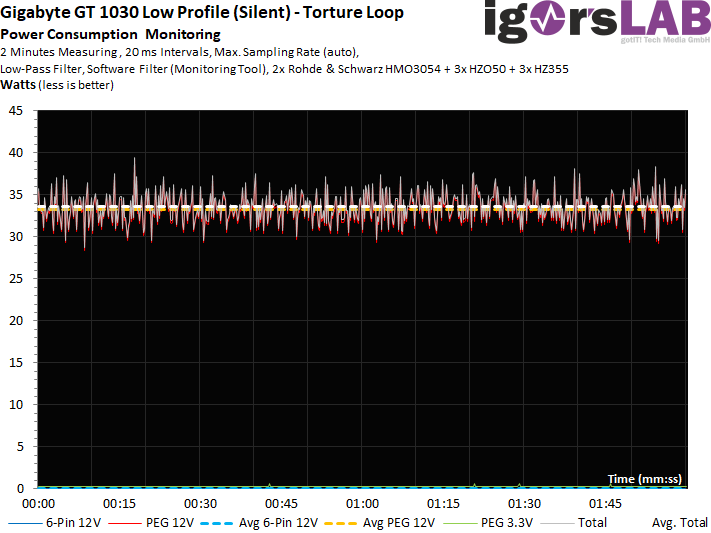
The curve for the current flow then also looks adequate:
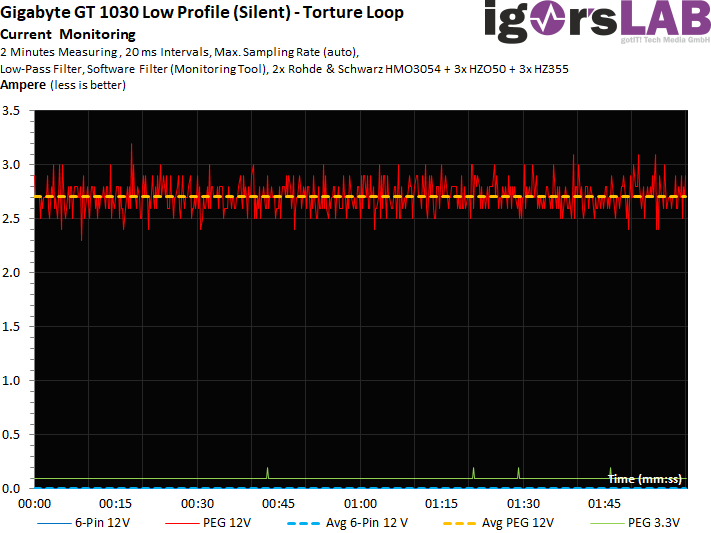
Compliance with the standard on the motherboard slot
Finally, we test compliance with the 5.5 ampere set by the PCI SIG as the upper limit for the allowed currents on the motherboard slot. With an average value of 2.7 amps, the card does not even load up to half the maximum allowed. You really don't have to worry about that!
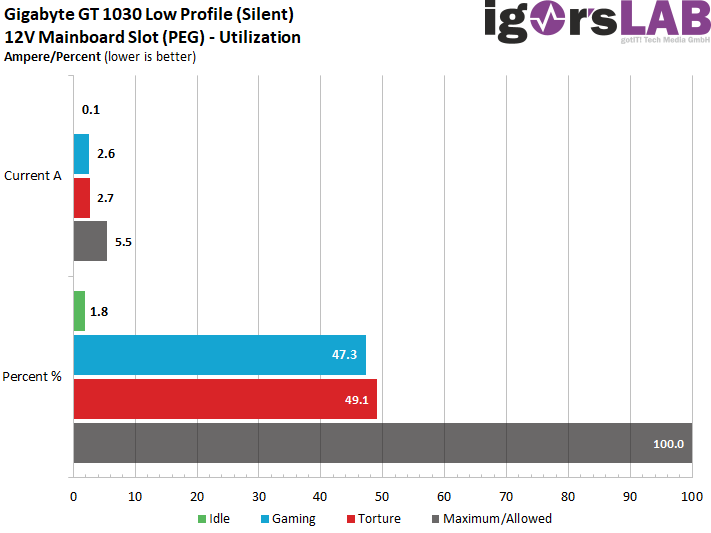































Kommentieren